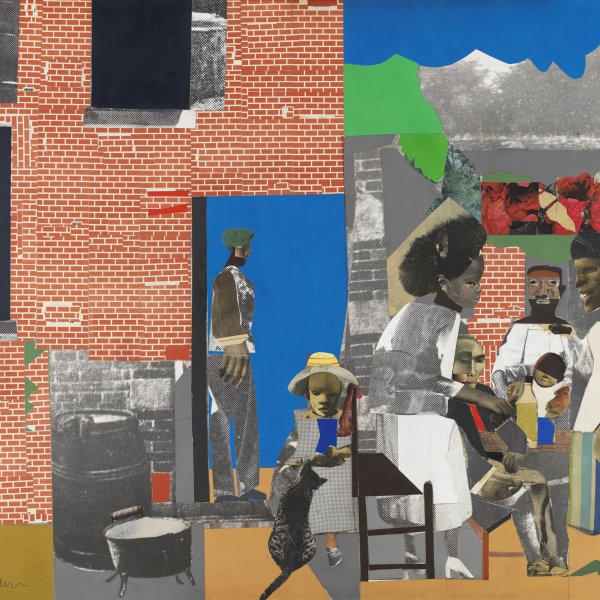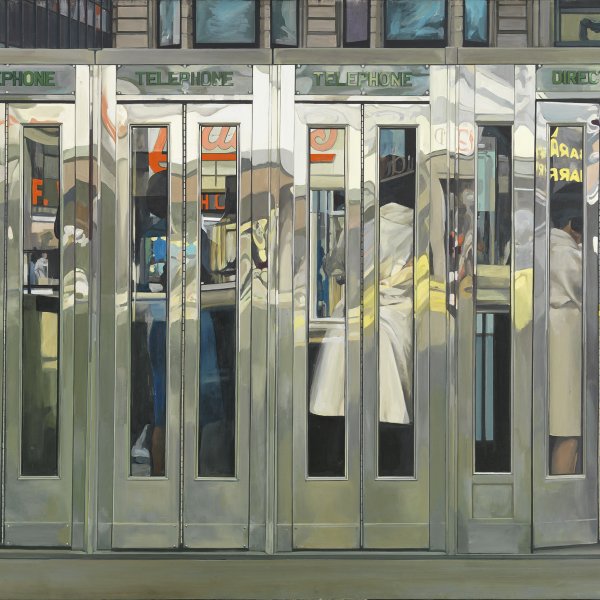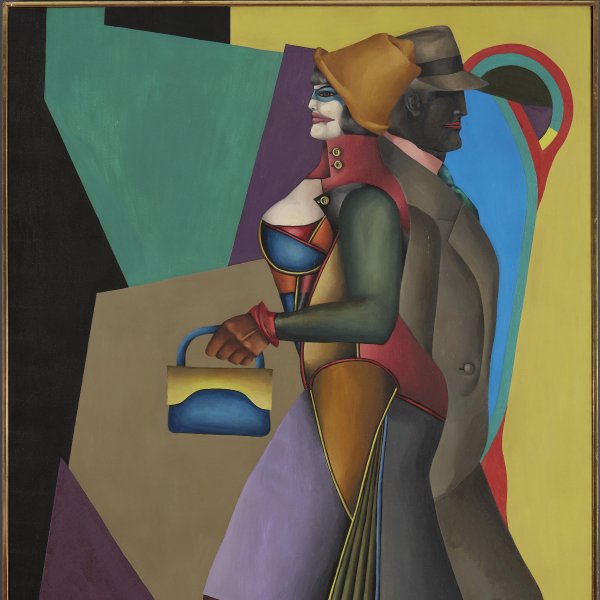Nude No. 1
1970
Oil on canvas.
63.5 x 114.5 cm
Museo Nacional Thyssen-Bornemisza, Madrid
Inv. no.
783
(1974.53
)
ROOM 52
Level 1
Permanent Collection
Tom Wesselmann was one of the main practitioners of American Pop Art, along with James Rosenquist and Roy Lichtenstein. Although Pop Art made a statement against the heroic aspirations of Abstract Expressionism, Wesselmann never denied that Willem de Kooning’s series of Women had been a permanent reference for him ever since he first set eyes on these works in 1953. Indeed, in 1964 he told the critic Gene Swenson that “De Kooning gave me content and motivation. My work evolves from that.”
At the end of the 1950s Wesselmann began a series of small collages of nudes in interior settings, built from magazine cuttings, which from 1961 provided the iconographic basis for his paintings of the Great American Nudes series. These modern odalisques painted in flat forms and brilliant colours combine models drawn from the tradition of the European nude, such as Manet’s Olympia and the nudes of Matisse or Modigliani, with everyday elements and images pertaining to American popular culture, taken from the cinema, press and television.
The present Nude No. 1, executed in 1970, is structurally similar to the Great American Nudes series and shows a female nude lying across the entire horizontal surface of the canvas in the foreground. By flattening the form of the body against the picture plane, Wesselmann achieves a certain abstract, depersonalised effect that contrasts with the carnal handling of the erogenous zones — pubis, prominent bust and fleshy lips — which, as in most of his compositions, make this painting an allegory of the woman as a sex symbol. The accompanying compositional elements, such as the photographic portrait of the painter, an orange and a vase of red roses, are related to the paintings of the series entitled Bedroom, from previous years. The inclusion of his own portrait has led some scholars to interpret this painting as a self-portrait. The fact that it is positioned next to the female body makes this great American nude an erotic, masturbatory dream.
Paloma Alarcó
At the end of the 1950s Wesselmann began a series of small collages of nudes in interior settings, built from magazine cuttings, which from 1961 provided the iconographic basis for his paintings of the Great American Nudes series. These modern odalisques painted in flat forms and brilliant colours combine models drawn from the tradition of the European nude, such as Manet’s Olympia and the nudes of Matisse or Modigliani, with everyday elements and images pertaining to American popular culture, taken from the cinema, press and television.
The present Nude No. 1, executed in 1970, is structurally similar to the Great American Nudes series and shows a female nude lying across the entire horizontal surface of the canvas in the foreground. By flattening the form of the body against the picture plane, Wesselmann achieves a certain abstract, depersonalised effect that contrasts with the carnal handling of the erogenous zones — pubis, prominent bust and fleshy lips — which, as in most of his compositions, make this painting an allegory of the woman as a sex symbol. The accompanying compositional elements, such as the photographic portrait of the painter, an orange and a vase of red roses, are related to the paintings of the series entitled Bedroom, from previous years. The inclusion of his own portrait has led some scholars to interpret this painting as a self-portrait. The fact that it is positioned next to the female body makes this great American nude an erotic, masturbatory dream.
Paloma Alarcó










